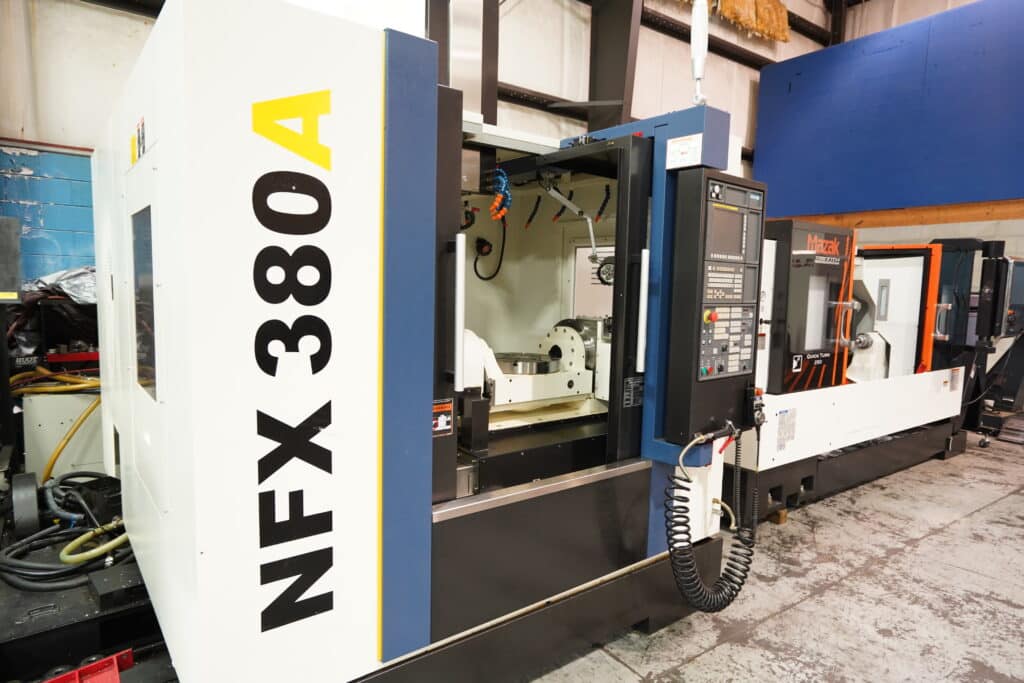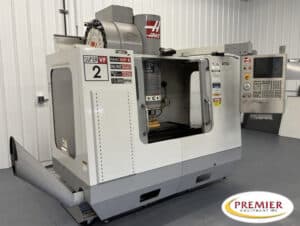Buying a used CNC machine is not as simple as comparing specifications in the world of precision manufacturing. Technical specs—power, axis range, and torque—while important, don’t tell the whole story. Hidden within each machine are deeper factors that determine its true value: the history of the machine, the maintenance records and the previous applications. These elements are necessary to judge a used CNC machine’s life, performance and suitability for a particular manufacturing need.
For anyone who is interested in making an informed investment in used CNC machinery, it is important to understand these often overlooked aspects. The specs are only half the story, it’s the history and maintenance of the machine that truly determine what it’s capable of on the manufacturing floor.
The Machine’s History: The Foundation of Value
Every CNC machine has a story, and that story starts with how it was operated. A machine that has been used consistently in a controlled, low wear environment will be worth more than a machine that has been pushed to its limits in heavy duty applications. For example, in aerospace or medical manufacturing machines that were once used, are often kept to the highest standards because of the precision needed in these fields. They’ll probably be more reliable, too, since the components of these machines are probably regularly recalibrated and serviced.
On the other hand, machines used in high volume fabrication may have been subjected to harsh operating conditions, and had increased risk of wear and tear. By understanding a machine’s history, buyers can understand the kind of usage and stress that the machine has been through, and assess whether it fits the manufacturing requirements. Furthermore, some industries, including defense and high precision automotive, require very strict machine accuracy, which may lead to a better maintained machine.
Maintenance Records: A Window Into Reliability and Lifespan
The second piece of the puzzle is the maintenance history of the machine, beyond knowing how the machine was used. Typically safer investments are machines with comprehensive, documented maintenance records that can tell you if the machine was serviced regularly or neglected. Machine accuracy, reliability, and life is directly impacted by routine maintenance on CNC machines, including spindle calibrations, alignment checks, and part replacements.
When a machine has a good maintenance history, it gives you peace of mind, because it means the machine was probably well maintained. For example, machines that are frequently calibrated or aligned have reliability and precision and will perform consistently in future applications. Maintenance records are a strong indicator of how long a machine should last, and a strong indicator of how much downtime a machine will have and how many repairs it will need.
The approach of previous owners to part replacements is also highlighted in maintenance records. Old or worn parts can slow machine productivity, while new or better quality replacement parts can extend the machine’s service life and operational efficiency. At the end of the day, a machine’s maintenance history is an inside look at how well it was taken care of, and is an important factor in determining its value.
The Impact of Previous Applications on Machine Suitability
Its history and maintenance tell you its general condition, but knowing what it was used to do helps you decide if it’s a good fit for certain jobs. CNC machines have different demands from different industries that can directly affect the wear patterns and functionality of the machine. A CNC machine used for light material cutting in electronics manufacturing will wear differently than one used for heavy duty steel machining in the construction industry.
Buyers seeking precision based tasks would find a CNC machine used in applications with high tolerance, such as aerospace or medical device production, more appealing. Machines with a history in heavy material machining may have higher load bearing capability, but they may also need to be carefully inspected for spindle wear or axis misalignment. This understanding helps buyers match the machine’s past applications to their intended use, so that it will meet the demands of their particular manufacturing processes.
Wear and Tear: A Crucial Part of the Valuation Process
The wear and tear of a used CNC machine is one of the biggest concerns when buying one. A visual inspection can identify surface level wear, but other problems such as spindle wear, backlash in the ball screws, or degradation of the control system are not seen. These are important to ensuring the machine functions properly and will quality of output, even the smallest of any of these components will influence the production quality.
If you are buying used, it is always important to have a qualified technician check out these elements. This includes spindle health, which is the key factor for machining precision. Chatter, inaccuracies and less than desirable surface finishes can also result from a worn spindle. Like the accuracy and repeatability of the machine, the ball screws and servo motors must be in good condition for this. If you skip this step, your buyers will be at risk of huge repair costs and future downtime.
The Cost Efficiency of Buying Used CNCs with Maintenance in Mind
The cost savings of used CNC machines are appealing to manufacturers, but the savings don’t stop at the purchase price. A well maintained machine can give you high returns by reducing downtime and repair cost. The decision to buy used can be a smart one for buyers who know the history and maintenance of a machine, and its applications, and who are willing to pay a little less for advanced technology.
Through a complete inspection and considering the effect of each factor on machine performance, manufacturers are able to invest in machines that will support their operational needs while assuring quality output. With hybrid models coming to the market, even SMEs can leverage multi tasking capabilities that used to need significant capital investment.
Making an Informed Decision: Beyond Technical Specs
If you’re looking at a used CNC machine, the process is much more involved than simply comparing specs on paper. In an industry where precision and reliability are the norm, the real value of a machine is determined by machine history, maintenance records, and prior applications. Manufacturers can make informed purchases that will support long term business growth by taking a comprehensive approach to valuation.
Additional Resources
For those looking to delve deeper into evaluating and maintaining used CNC machines, the following resources offer comprehensive insights and practical guidance:
- Premier Equipment’s Guide to Used CNC Machines: An extensive guide covering all aspects of purchasing used CNC machines, including key considerations and best practices.
- Technological Advancements in CNC Manufacturing: An overview of the latest technological trends in CNC machining and how they impact machine performance and suitability.
- Industry Standards for CNC Machines: Information on international standards governing CNC machine specifications and performance benchmarks.
- Financing Options for CNC Equipment: Explore various financing plans available to acquire CNC machines without overextending your budget.
This information is valuable to manufacturers when purchasing and maintaining used CNC machines to make strategic and beneficial investments for long term success.
Conclusion
Investing in a used CNC machine is a good idea, if you do it right, because it is a very cost efficient and operationally capable investment. To get the full story of a machine, manufacturers must go beyond the specs to understand what high performance equipment can do for them at a fraction of the new cost.



